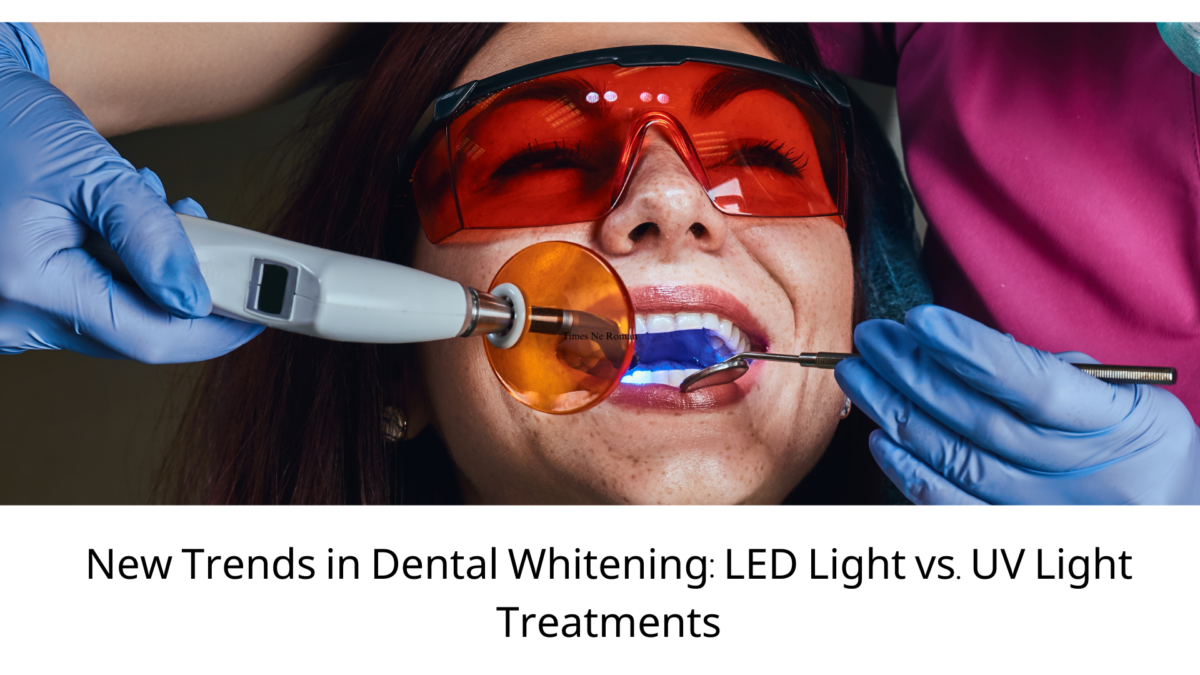
Teeth whitening is one of the most popular cosmetic dental procedures worldwide. As patients seek brighter, whiter smiles, dental professionals and at-home systems continuously develop more advanced methods to achieve the desired results. Among the latest innovations in this field are LED light and UV light treatments. Both methods enhance the effects of bleaching agents to speed up whitening results, but they differ significantly in technology, effectiveness, safety, and long-term outcomes.
This article dives deep into the new trends in dental whitening, comparing LED light treatments with UV light options, helping you understand which might be more suitable for your whitening goals.
Dental whitening involves using bleaching agents, typically hydrogen peroxide or carbamide peroxide, to remove stains and discoloration from the teeth. These agents break down into oxygen molecules, which penetrate the enamel and dentin, dissolving stains and leading to a brighter smile.
Over time, traditional teeth whitening methods have evolved, incorporating new technologies like laser treatments, light-accelerated whitening, and most recently, LED and UV lights. These technologies aim to activate the bleaching agent faster, reducing treatment time and boosting results.
Light-activated whitening systems use energy from light to accelerate the chemical reactions within the bleaching agents. This process is often called “photocatalysis.” In simple terms, the light boosts the bleaching agent’s effectiveness, allowing it to break down stains more quickly.
There are two primary forms of light therapy used in modern whitening procedures: LED light and UV light.
LED (Light Emitting Diode) technology is relatively new in dental whitening but has quickly gained popularity for several reasons, including its effectiveness, safety, and convenience.
In LED light whitening, a bleaching gel is applied to the teeth, followed by exposure to an LED light source. The LED emits a specific wavelength of blue light, which activates the peroxide in the gel, enhancing its stain-removing ability.
UV (Ultraviolet) light treatments have been used in teeth whitening for many years, largely in professional settings like dental offices. While UV whitening is effective, recent trends show that it is being gradually overtaken by safer and more comfortable alternatives, such as LED whitening.
Similar to LED light whitening, UV light whitening uses a bleaching agent, typically hydrogen peroxide, which is applied to the teeth. The UV light is then used to activate the peroxide. UV light, however, emits a higher energy wavelength than LED light, which can make the bleaching process faster and more intense.
Recent advancements in technology have allowed for the creation of more efficient and safer whitening systems. LED technology, in particular, has been a game-changer in this industry. Innovations have made the process more accessible, affordable, and comfortable for patients.
Some of the latest trends in LED whitening include the introduction of smart LED devices that can be controlled through smartphone apps. These devices allow patients to customize their whitening sessions, set timers, and track their progress. The convenience of such devices has made at-home whitening treatments more popular than ever.
Another emerging trend is the development of hybrid light systems that combine both LED and UV light for maximum effectiveness. These systems are designed to offer the benefits of both technologies, ensuring deep whitening while minimizing the risks associated with UV light.
As sustainability becomes a growing concern in dentistry, light-activated whitening treatments are also seeing a shift towards eco-friendly practices. Many manufacturers are now focusing on reducing the environmental impact of whitening systems by using recyclable packaging, reducing the use of harmful chemicals, and creating energy-efficient devices.
LED systems, in particular, are leading the way in this regard. LED lights use less energy compared to UV lights, making them more environmentally friendly. Additionally, many at-home LED whitening kits now use reusable mouth trays, further reducing waste.
Choosing between LED light and UV light whitening ultimately depends on your specific needs, preferences, and oral health condition. Here are a few considerations to help guide your decision:
Whichever whitening method you choose, it’s important to maintain your results by following good oral hygiene practices. Here are a few tips:
Dental whitening continues to evolve, with LED and UV light treatments representing two of the most popular and effective options available today. LED whitening offers a safer, more comfortable experience with steady results over time, while UV whitening provides rapid, dramatic results, though with more potential risks.
Ultimately, the choice between LED and UV light whitening depends on your personal preferences, oral health, and the recommendations of your dental professional. Whichever method you choose, maintaining good oral hygiene and scheduling regular dental check-ups will ensure your smile stays bright and beautiful for years to come.
#TeethWhitening #LEDTeethWhitening #UVLightWhitening #CosmeticDentistry #SmileMakeover #WhiteningTrends #LEDvsUVWhitening #AtHomeWhitening #BrightSmile #DentalCare